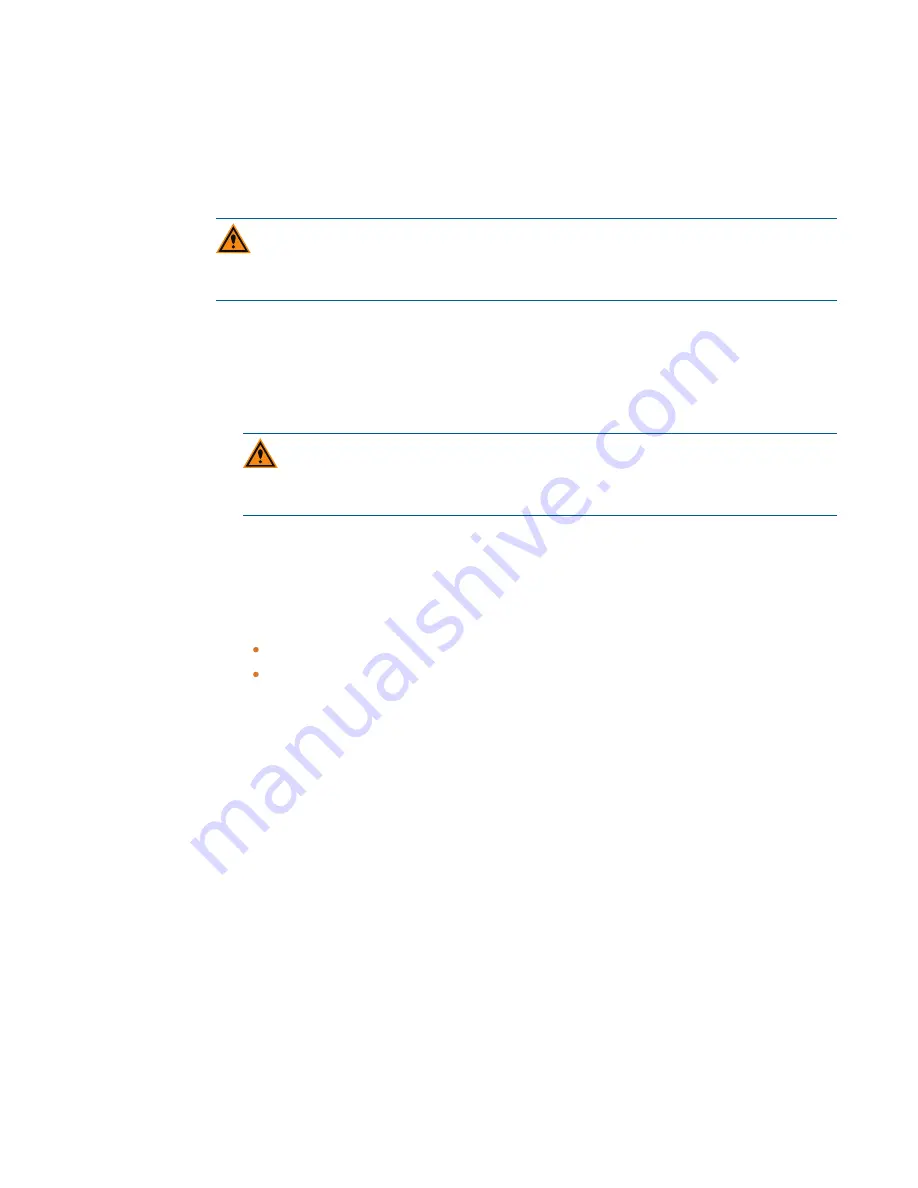
Chapter 2: Setting Up the Instrument
5016208 D
19
Cleaning Filters
You can clean excitation and emission filters. To minimize the risk of surface damage, clean
the filters only when the surface is noticeably dirty.
CAUTION!
Filter surfaces are extremely fragile and should be cleaned only when
noticeable contamination, such as dust and fingerprints, are visible on the surface.
Filters should be cleaned by experienced users only.
To clean a filter:
1. Place a soft, clean cloth on the work surface to prevent damage if the filter is dropped
during cleaning.
2. Wear powder-free latex gloves or finger cots to reduce the risk of damage to the filter
surface and to protect skin from cleaning solvents.
CAUTION!
Use only oil-free compressed air, nitrogen, or canned dusters that do
not use freon or similar propellents to blow dust from the filter. Other sources of
compressed gas can leave a residue on the filter surface.
3. Blow air from a canned duster or bulb-type blower over the filter surface to remove dust.
Periodically clean the bulb blower to prevent surface contamination.
Alternatively, gently wipe dust from the filter surface with a camel-hair brush. Periodically
clean the brush to prevent filter surface contamination.
4. Examine the filter surface.
If no contamination remains, return the filter to the filter slide or packaging.
If contamination, such as fingerprints, is still present on the surface, apply a drop of
spectroscopic grade isopropyl alcohol on an unused cotton swab and then gently
sweep the filter surface from edge to edge in a single direction only. This prevents
you from dragging debris across the surface multiple times.
















































